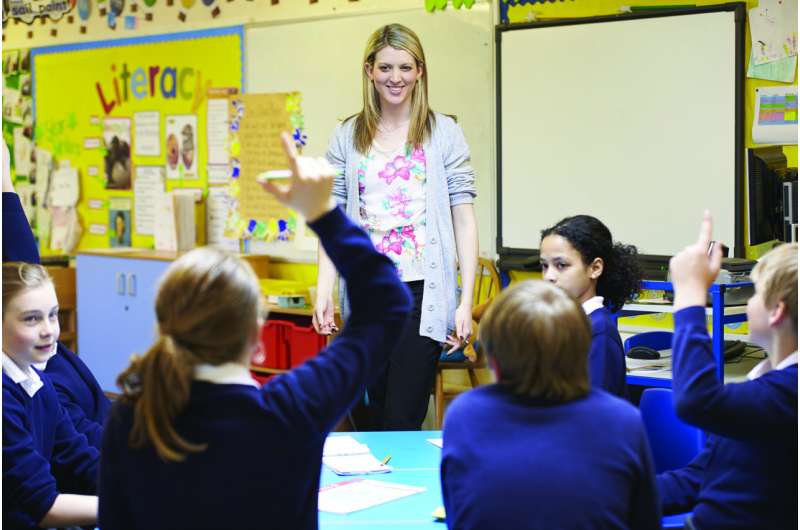This article has been reviewed according to Science X's editorial process and policies. Editors have highlighted the following attributes while ensuring the content's credibility:
fact-checked
trusted source
proofread
Slick teaching techniques have less impact on learning than collaborative classroom culture, research suggests

Plenty of homework, small classroom sizes and a long school day are often seen as the mark of a successful school—but research shows the number one factor that impacts learning is engaging teaching.
An internationally renowned teaching expert has carried out the most thorough research to date on classroom best practice. His extensive studies have revealed that none of these factors, from homework to classroom size, have a huge impact on learning outcomes.
The study suggests the main influencing factors are teacher mind frames and whether the students are given a clear purpose and can understand their learning journey.
Professor John Hattie is one of the most famous education researchers in the world—his ground-breaking research in "Visible Learning" became a playbook for teachers and schools all over the world.
Hattie's first book was released in 2008 to huge critical acclaim, containing a the most thorough analysis of what works in schools ever compiled, with easy-to-understand ranking systems. The concept was simple—to use as much data as possible to understand what classroom techniques best improve student learning.
Hattie put in 20 years of work to understand where exactly the hinge points could be found, at which point educational interventions start to positively impact students.
The series has been critical for educators and policymakers in the last 15 years, selling more than two million copies worldwide and being published in 27 languages.
What is new?
Hattie has returned with a sequel, delving even further in the statistics to glean the best possible insights.
The acclaimed 2008 "Visible Learning" was created using 870 meta-analyses, carefully merging the findings of 95,000 studies involving more than 300 million students globally to understand how school culture and teaching style influence learning.
This sequel is the result of scouring 2,100 meta-analyses over 40 years, drawn from more than 130,000 studies and involving more than 400 million students from all around the world.
Hattie said, "This isn't about hints and tips that will give schools easy hacks to good grades, this is about changing the culture of education so that teachers are excited about teaching, and students are excited and engaged in learning.
"Every child can learn, can grow, and can be taught to love learning. The most important thing a teacher can do it to have high expectations for all students and to see differences as opportunities to learn in different ways, and to teach students to welcome the challenge to aim high."
Research and reality
Since the first book was published, Hattie created and launched teaching programs around the world, gaining an even deeper understanding of the lived reality of teaching.
There has also been a global pandemic, which Hattie acknowledges in the book as having had a huge impact on the mental health of children and teachers, amplifying the connection between social and emotional well-being and learning.
Hattie suggests equipping teachers with emotional and problem-based coping strategies that they can pass on to their students.
He explains, "We do that by creating classrooms full of trust, where mistakes are seen as opportunities to learn, and the teachers are constantly assessing their own impact.
"We want students to trust their teachers and know what they are learning, why they are learning, and knowing their progress in their learning."
More information: John Hattie, The challenge, Visible Learning: The Sequel (2023). DOI: 10.4324/9781003380542-1
Provided by Taylor & Francis





















